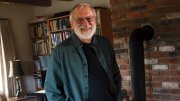Harvard University Police Department (HUPD) radio dispatchers refer to officers by their badge numbers. Patrolman James P. Sullivan's badge is 01, but no dispatcher reads it "oh-one"--instead, he is known as "old one." The badge traditionally belongs to the longest-serving HUPD officer--now Sullivan, who joined in 1966. A life-long Cantabrigian, he began working at Harvard in 1964 as a mailroom clerk. Two years later, in an era when HUPD had one patrol car and no radios, Chief Robert Tonis hired him as a patrolman. Since then, he's seen four University presidents, six chiefs, four uniform styles, and countless improvements in training and equipment. He says that since he began patrolling, he's gotten himself a Harvard education person by person, building by building. He has witnessed most major events at Harvard in the last 35 years, from riots to visits by royalty and rock stars. (The avid sports fan, who has been going to Fenway Park since he was a "little kid," cites meeting Jackie Robinson as one of the best moments.) Now, under Chief Francis D. "Bud" Riley, HUPD has instituted community policing--a move Sullivan welcomes: he's been using wry humor and sage advice to do just that for almost four decades, making friends across the University. "Part of being a good police officer is being a human first," he explains. The Longwood substation, his base for the past four years, is a three-room suite dominated by a fish tank belonging to the station commander. It's peaceful in the tank now, but a tiny shark once ate a couple of other fish. When the shark got "belligerent," Sullivan says, officers removed him: "We don't want a hostile environment anywhere here--even if it's in a fish tank."
James P. Sullivan
James P. Sullivan
Harvard University Police Department (HUPD) radio dispatchers refer to officers by their badge numbers. Patrolman James P. Sullivan's badge is...
Explore More From Current Issue

The 1884 Cannibalism-at-Sea Case That Still Has Harvard Talking
The Queen v. Dudley and Stephens changed the course of legal history. Here’s why it’s been fodder for countless classroom debates.

For Campus Speech, Civility is a Cultural Practice
A former Harvard College dean reviews Princeton President Christopher Eisgruber’s book Terms of Respect.



